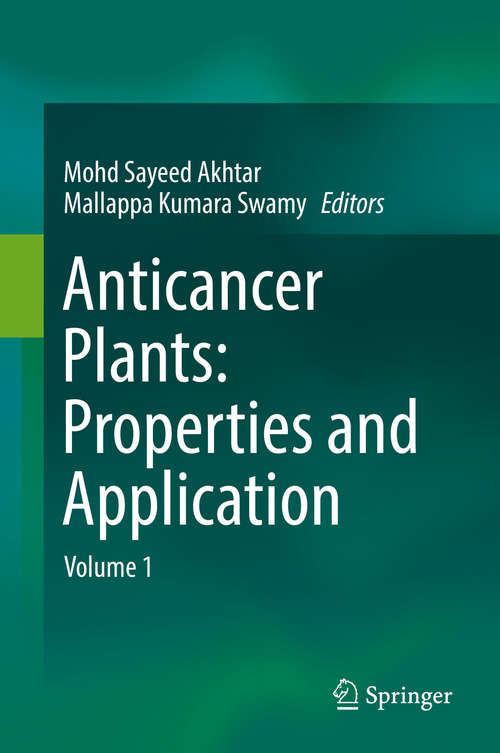Anticancer plants: Volume 1
By: and
Sign Up Now!
Already a Member? Log In
You must be logged into UK education collection to access this title.
Learn about membership options,
or view our freely available titles.
- Synopsis
- Cancer is one of the leading death cause of human population increasingly seen in recent times. Plants have been used for medicinal purposes since immemorial times. Though, several synthetic medicines are useful in treating cancer, they are inefficient and unsafe. However, plants have proved to be useful in cancer cure. Moreover, natural compounds from plants and their derivatives are safe and effective in treatment and management of several cancer types.The anticancer plants such as Catharanthus roseus, Podophyllum peltatum, Taxus brevifolia, Camptotheca acuminate, Andrographis paniculata, Crateva nurvala, Croton tonkinensis, Oplopanax horridus etc., are important source of chemotherapeutic compounds. These plants have proven their significance in the treatment of cancer and various other infectious diseases. Nowadays, several well-known anticancer compounds such as taxol, podophyllotoxins, camptothecin, vinblastine, vincristine, homoharringtonine etc. have been isolated and purified from these medicinal plants. Many of them are used effectively to combat cancer and other related diseases. The herbal medicine and their products are the most suitable and safe to be used as an alternative medicine. Based on their traditional uses and experimental evidences, the anticancer products or compounds are isolated or extracted from the medicinally important plants. Many of these anticancer plants have become endangered due to ruthless harvesting in nature. Hence, there is a need to conserve these species and to propagate them in large scale using plant tissue culture. Alternatively, plant cell tissue and organ culture biotechnology can be adopted to produce these anticancer compounds without cultivation. The proper knowledge and exploration of these isolated molecules or products could provide an alternative source to reduce cancer risk, anti-tumorigenic properties, and suppression of carcinogen activities.Anticancer plants: Volume 1, Properties and Application is a very timely effort in this direction. Discussing the various types of anticancer plants as a source of curative agent, their pharmacological and neutraceutical properties, cryo-preservations and recent trends to understand the basic cause and consequences involved in the diseases diagnosis. We acknowledge the publisher, Springer for their continuous inspiration and valuable suggestions to improvise the content of this book. We further extend our heartfelt gratitude to all our book contributors for their support, and assistance to complete this assignment. I am sure that these books will benefit the scientific communities including academics, pharmaceuticals, nutraceuticals and medical practitioners.
- Copyright:
- 2018
Book Details
- Book Quality:
- Publisher Quality
- ISBN-13:
- 9789811085482
- Related ISBNs:
- 9789811085475
- Publisher:
- Springer Singapore, Singapore
- Date of Addition:
- 11/07/18
- Copyrighted By:
- Springer Nature Singapore Pte Ltd.
- Adult content:
- No
- Language:
- English
- Has Image Descriptions:
- No
- Categories:
- Nonfiction, Science, Technology, Medicine
- Submitted By:
- Bookshare Staff
- Usage Restrictions:
- This is a copyrighted book.
Reviews
Other Books
- by Mohd Sayeed Akhtar
- by Mallappa Kumara Swamy
- in Nonfiction
- in Science
- in Technology
- in Medicine
